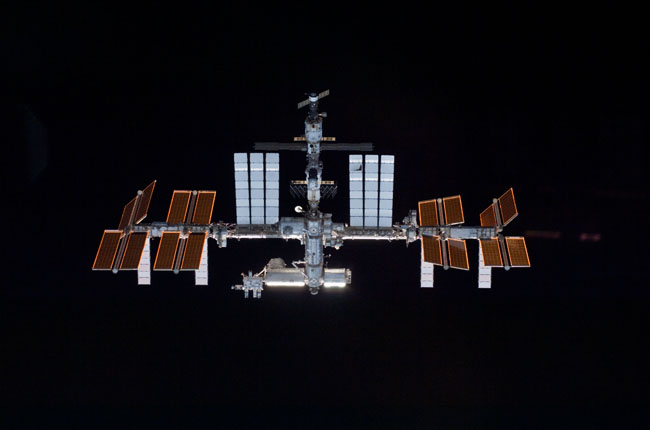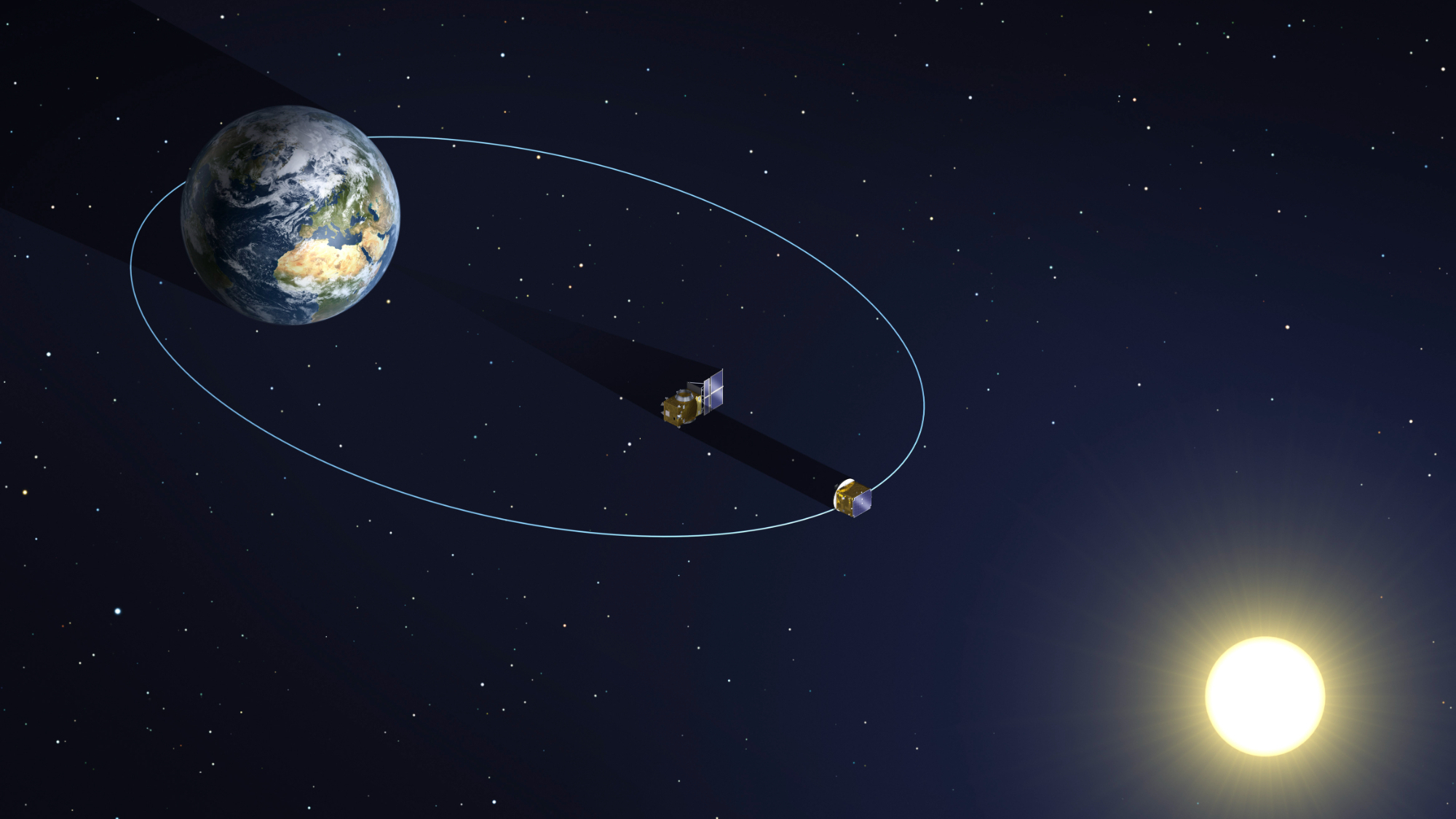Russian Cosmonauts Begin Six-Hour Spacewalk

Two Russian cosmonauts ventured outside the International Space Station today (Aug. 3) to begin a planned six hour spacewalk.
The spaceflyers will release an amateur ham radio satellite into space that will transmit data to classrooms of students worldwide. The spacewalkers will also install an experimental laser-based communications system and perform general upgrades to the station.
Flight engineers Sergei Volkov and Alexander Samokutyaev opened the hatches of the space station's Pirs airlock at 10:50 a.m. EDT (1450 GMT), signifying the official start time of the spacewalk. The cosmonauts ran about 20 minutes behind schedule as they performed final leak checks on their spacesuits.
Today's excursion is Volkov's third time working on the exterior of the station and Samokutyaev's first. Both cosmonauts are wearing Russian Orlan-MK spacesuits marked with blue stripes.
The duo's first task is to release a boxy, 57-pound satellite, known as ARISSat-1 or Radioskaf-V. The satellite was designed and built by amateur radio operators to help drum up interest in scientific and technological careers among students.
The deployment of ARISSat-1 is the first test flight of a proposed series of small educational satellites developed as a cooperative effort between NASA, the Radio Amateur Satellite Corp. (AMSAT), Amateur Radio on the International Space Station (ARISS), and the Russian Federal Space Agency.
From the classroom to space
Get the Space.com Newsletter
Breaking space news, the latest updates on rocket launches, skywatching events and more!
Using ham radio equipment in classrooms, students and teachers will be able to gain access to data from the satellite. ARISSat-1 will transmit still-frame video Earth views from four onboard cameras, voice recordings of commemorative greetings in the native languages from students around the world, including messages celebrating the 50th anniversary of Yuri Gagarin's flight that marked the first human in space.
Students from all over the world also submitted images that are currently stored onboard the satellite as part of its payload.
The satellite will also collect readings from a sensor as part of a Russian science experiment that aims to measure the pressure in Earth's lower atmosphere.
ARISSat-1 is also carrying a Morse code tracking beacon that will allow amateur ham radio operators worldwide to follow along.
Volkov and Samokutyaev are scheduled to release the ARISSat-1 satellite into space at around 11:07 a.m. EDT (1507 GMT).
Upgrades to the space station
The spacewalkers will then install an experimental laser-based system designed to transmit data at extremely high speeds to Earth from Russian science experiments. The barbecue grill-shaped system will be installed on a work platform outside the Russian Zvezda service module just behind its solar arrays.
Volkov and Samokutyaev will then take photographs of an antenna nearby that is not performing as expected. The pictures will be sent back to Earth to help engineers pinpoint the issue.
The spacewalkers will next retrieve an obsolete antenna that was originally used to help spacecraft dock to the Poisk module on the station's Russian segment. Since the antenna is no longer needed, Volkov and Samokutyaev will bring it back inside the station with them. [Building the International Space Station]
The next major task of the spacewalk involves moving a cargo boom — a long pole used to grab and transport equipment — from one docking compartment to another. This laborious task is expected to take nearly three hours to complete. Once the cargo boom has been installed at its new location, space station residents will be able to use it like a fishing rod to move larger components around on the outside of the space station's Russian segment.
The final task of the day will be to retrieve an experiment and install it outside the Pirs module. The experiment, called Biorisk, will examine the effects of bacteria and fungus on structural materials used to build spacecraft. The experiment will focus on how solar activity may influence the growth of these microbes.
The next Russian spacewalk is currently scheduled to occur in February 2012.
You can follow SPACE.com staff writer Denise Chow on Twitter @denisechow. Follow SPACE.com for the latest in space science and exploration news on Twitter @Spacedotcom and on Facebook.
Join our Space Forums to keep talking space on the latest missions, night sky and more! And if you have a news tip, correction or comment, let us know at: community@space.com.

Denise Chow is a former Space.com staff writer who then worked as assistant managing editor at Live Science before moving to NBC News as a science reporter, where she focuses on general science and climate change. She spent two years with Space.com, writing about rocket launches and covering NASA's final three space shuttle missions, before joining the Live Science team in 2013. A Canadian transplant, Denise has a bachelor's degree from the University of Toronto, and a master's degree in journalism from New York University. At NBC News, Denise covers general science and climate change.
